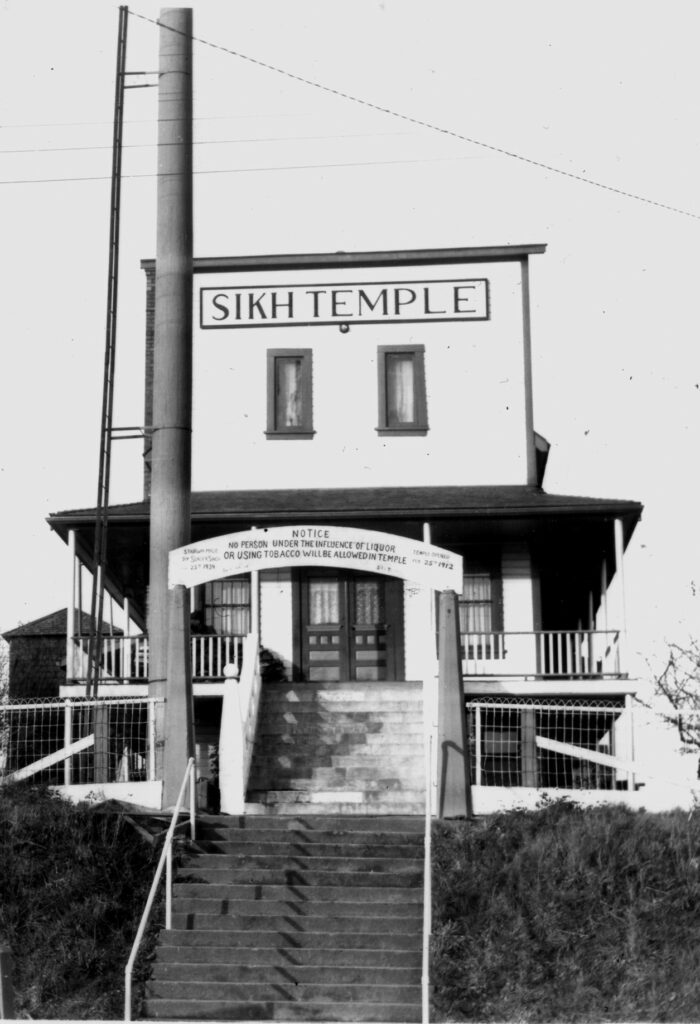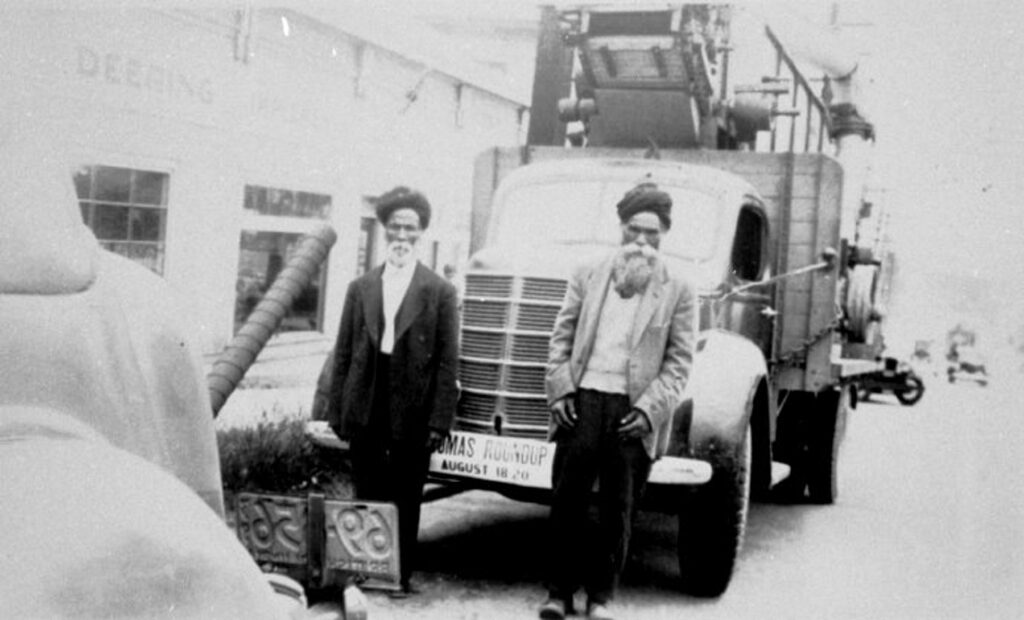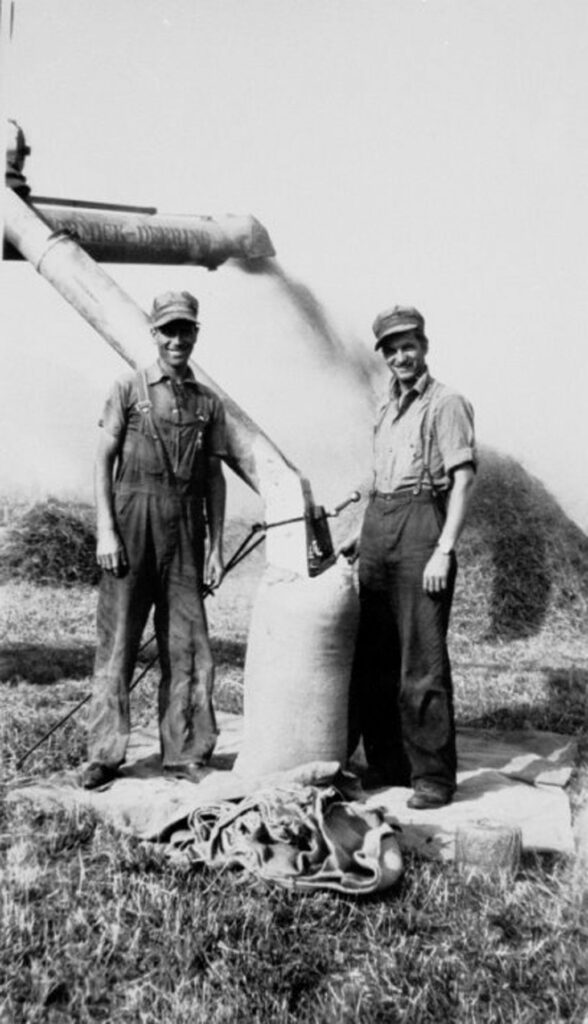Restrained Immigration of the South Asian
South Asians, primarily Sikh, began immigrating to Canada and British Columbia in 1903, arriving in the Fraser Valley by 1905, in search of higher wages to send money back to their families in India. Quickly, colonial European settlers began to fear that this population would take over the spaces that they perceived ownership of and they began to create legislation to prevent South Asian immigration.[1] By 1907 British Columbia had reduced the rights of South Asians so that they could not vote, hold public office or even labour on public works. By 1908, this was expanded to include direct immigration prevention laws, mandating that immigrants could only travel directly from their home country to Canada (which ended South Asian immigration as they did not allow shipping lines directly from India and other countries). Despite protest this law persisted and in 1914 the Komagata Maru incident saw nearly 400 immigrants turned away from British Columbia, not even allowed to disembark after their months long journey.[2] These laws continued into the 1920s, when finally due to protest when wives and children of South Asians living in Canada were slowly allowed to join their husbands and fathers. The laws against voting and the continuous journey ban would only be lifted by 1947 and were replaced with a quota of 300 South Asian Immigrants per year.[3]
What the South Asian did in Abbotsford
The South Asian community in Abbotsford worked at the Abbotsford Lumber Mill with the Settlers and the Japanese. While the majority of the community was employed here, there were also many who were able to purchase and work on farms.
This community was primarily Sikh and when they were not at work they were working on constructing the Gur Sikh temple. They finished the temple in 1911 just three years after they began. Together Sunder Singh Thandi and Arjan Singh donated a one acre property overlooking mill lake for the temple. The Abbotsford Lumber Company agreed to a request from Sunder Singh Thandi to donate the necessary lumber for the building to the Sikh and with this donation the community was able to work together to build the Gur Sikh Temple.

Sunder Singh Thandi
Sunder Singh Thandi arrived in British Columbia in 1907 just before the strict immigration rules were enacted.[4] He moved to Abbotsford and began working at the Abbotsford Lumber Mill where he excelled and was quickly given a manager position looking over a group that fluctuated from 15-30 members. With his position he was able to get the Trethewey family to donate as much lumber to the Sikh building of a Temple as the men who worked at the mill could carry to the site Sunder had purchased, which was at the top of a hill. Despite this being a difficult task the Sikh community managed to complete the Gur Sikh Temple between 1908 and 1911.
Once the Gur Sikh Temple was completed Sunder returned to India to find a wife. Together they returned in 1912, they were allowed into the country despite the strict immigration rules as Sunder was a returning resident. On their return Sunder began purchasing land and became a farmer.
This choice to become a farmer helped Sunder and his family to not feel the worst effects of the depression as land in the Fraser Valley was not impacted significantly. He was able to purchase 300 acres of farmland in Abbotsford as well as working on other short-term lands that he rented. As a farmer, Sunder gained a reputation as being one who would help all those willing to work.[5] Ben Ratzlaff, a Mennonite labourer who was given a place to live at the Sunder farm, recalls Sunder giving jobs to those who needed work even when he did not need any work done. This was immensely helpful to the Mennonite community that moved to Clearbrook at the beginning of the depression and needed support to get established in the Abbotsford community. Further, Sunder Singh was well known not just in Abbotsford but as far as Vancouver as an honest farmer who provided good quality products.
While Sunder had a stellar reputation, he still faced prejudice from those that he helped. Sunder was an active member of the Sikh community but the Mennonites that he helped still called him ‘Joe the Hindu’ and his employee Ben Ratzlaff said that if you used his real name, they would not know who you meant.[6]


Treatment at the Abbotsford Mill
Those not involved in farming struggled significantly more during the depression years. This group primarily worked at the Abbotsford Lumber mill and along with the Japanese were fired en masse when the economy crashed. These workers were then left trying to find work at a time of skyrocketing unemployment.

Click here for a bibliography for this page. Click here for a full website bibliography.
[1] Buchignani, Norman. “South Asian Canadians.” (The Canadian Encyclopedia. Historica Canada. May 12, 2010).
[2] Johnston, Hugh. “Komagata Maru.” The Canadian Encyclopedia. Historica Canada. February 07, 2006.
[3] Buchignani.
[4] Sharanjit Kaur Sandhra. “Sunder Singh Thandi – Pioneer Interviews”, (Khalsa Diwan Society Abbotsford, n.d).
[5] “P11911 – 1945”, (The Reach Gallery and Museum, 2022).
[6] “P11911 – 1945”, (The Reach Gallery and Museum, 2022).